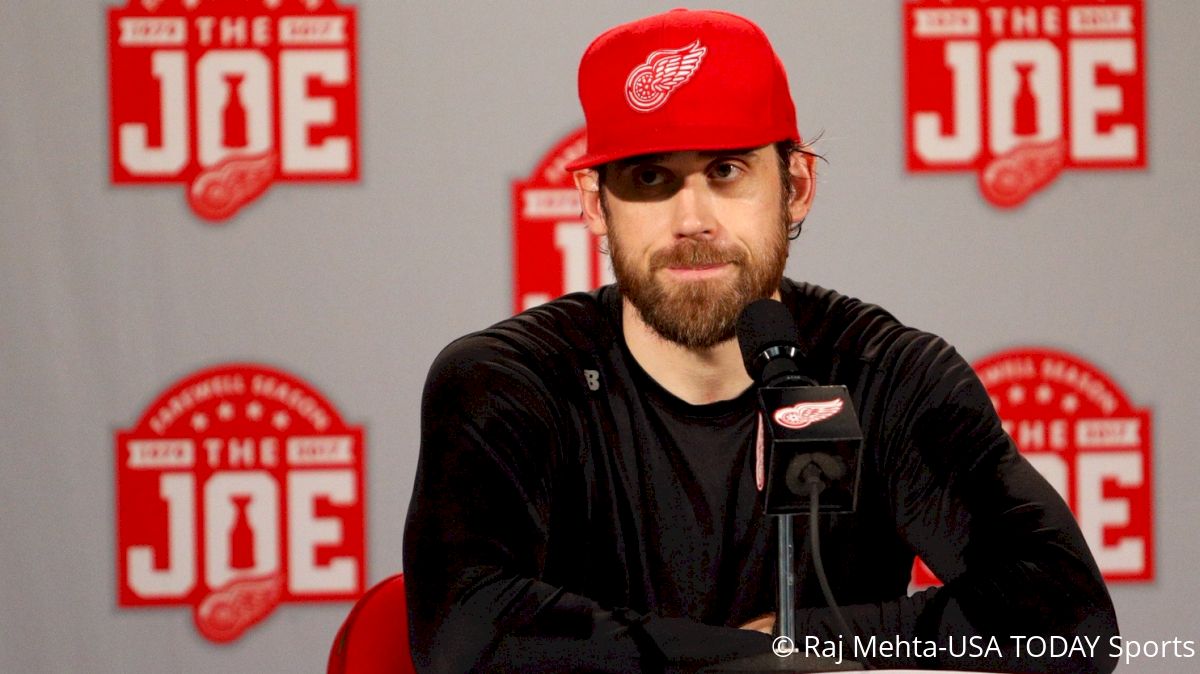Players Question Rule Changes -- And They Have A Point
Players Question Rule Changes -- And They Have A Point
The NHL made some rule changes, and Henrik Zetterberg isn't happy. The Red Wings captain isn't the only one.

By Jacob Messing
Detroit Red Wings captain Henrik Zetterberg got straight to the point when asked about the NHL’s new rules.
“It's slowing down the game; it's almost mocking the game,” Zetterberg told MLive’s Ansar Khan.
This year, officials are highlighting two areas: cracking down on slashing penalties, and enforcing stricter faceoff regulations. Since the beginning of the preseason -- as referees put theory into practice regarding the new rules -- players have been widely outspoken about both the rules themselves and the ways referees are enforcing them.
Their primary concern, as Zetterberg indicates, is the speed of the game.
The NHL has been transparent in its desire to produce more goals, but this may not be the way to do it. The new rules blatantly increase power plays, which inevitably increase total goals -- but the sacrifice of pace is too great a price to pay for the end result.
The Slashes
Let’s just say with how often slashing has been called this preseason, a certain former Guns N’ Roses guitarist may not even be allowed in the building.
At the time of writing this, 72 preseason games had been played, but only 60 were statistically tracked. In those 60 games, a whopping 223 slashing minors were called, accounting for 446 penalty minutes. That averages out to 3.7 slashes per game -- a ridiculously high number.
Fraser is right: officials simply can’t call 3.7 slashes per game -- which translates to more than six minutes of penalty kill time -- when, last season, the average time spent on the penalty kill was already above five minutes.
The preseason rate would nearly double the league average for a team’s time spent on the penalty kill, and that’s before adding in the increased faceoff violation penalties.
The strict enforcement on slashing doesn’t come as much of a surprise, however. At the end of last season, Sidney Crosby landed a nasty slash on Marc Methot, whose fingertip was quite literally chopped off. See for yourself, but consider this your graphic warning.
The horrific sequence came a few months after Calgary Flames forward Johnny Gaudreau missed ten games with a broken finger after a count of 21 (21!) slashes targeted the forward’s hands in a November game with the Minnesota Wild.
These are just two injuries picked from an incalculable amount -- unknown given that injuries are only labeled upper- or lower-body ailments -- of slash-related injuries in recent memory.
Some fans have enjoyed the greater attention to slashing, citing safety and skill as reasons, while others have felt cheated of five-on-five hockey as nearly every second seems to find one team shorthanded.
Faceoff Infractions
NHL officials are targeting players bending or breaking the rules regarding faceoffs with the second major rule change of the year. New procedures have been put in place to assure faceoffs are taken more fairly than they have been in times past.
Referees are allowing a single mistake at the faceoff circle. The following infringements would get the center tossed: if he acts too slow or too fast, if he moves his skate, if a teammate crowds the dot, or if any other movement rubs the ref the wrong way.
Here’s the kicker: if the winger -- who takes the place of the center -- infringes on the faceoff in a similar way, it’s a faceoff infraction, leading to an automatic two-minute delay of game penalty.
Players have not responded kindly to the new rule.
“That’s how you ruin the game of hockey,” the Boston Bruins’ Brad Marchand told Sportsnet when asked about faceoff infractions, adding that you can’t have a winger take every faceoff.
He wasn’t the only Bruin sounding off.
“The faceoff is definitely an adjustment,” Patrice Bergeron told reporters last week. “I don’t see how they can keep that going. (Taking) faceoffs is a skill and you work your whole career to develop that…hockey’s a fast game, and right now they’re slowing it down.”
They may have a point.
Not only does the rule disallow a center to win a draw with his feet -- which is a skill some have put to good use (see Giroux, Claude) -- but it’s asking players to suddenly change the entire method they’ve used during their hockey careers, whether they’re 18 or 35 years old.
As the players note, there’s also the potential consequence of slowing the game down. The process of calling a penalty, escorting the player to the penalty box, and then marching down the ice to start the power play naturally -- all these steps delay the action.
Power plays do, of course, lead to goals, and increased scoring has been the NHL’s end game for several years.
It’s also worth noting that there have only been 17 delay of game penalties called due to faceoff infractions over the 60 preseason games previously mentioned. But the criticism has been harsh enough for the NHL to have reportedly sent out a memo to officials asking them to “dial it back a bit,” for both slashing and faceoff violations.
Good News Or Bad News?
The good news is if the report of the NHL asking officials to take a step back is true, things could draw a little closer to normalcy before the regular season starts.
The bad news is in a league already attacked for its inconsistency -- goalie interference, coach’s challenges, etc. -- asking referees to dial it back could invite more inconsistency and unpredictability from the league’s officials.
How do you feel about the enforcement of these new rules? Have a question or a comment for Jacob Messing? You can find him on Twitter @JMessing23.